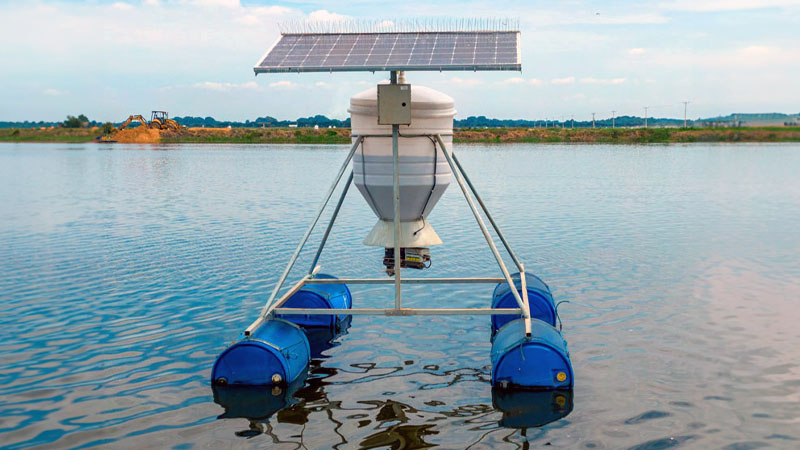Exclusive content

The Mekong Delta region in Vietnam stands as a beacon of both seafood production and renewable energy potential. Amidst its lush landscapes and unique climatic conditions, a remarkable transformation is underway. Beyond its traditional role as a seafood powerhouse, the region is embracing renewable energy, particularly solar power, as a means to bolster shrimp farming operations. This dual approach not only ensures a stable energy source but also promises significant economic returns.
Active Support in Bac Lieu
Bac Lieu, a pivotal hub for shrimp farming, has emerged as a trailblazer in adopting solar power solutions. Faced with exorbitant electricity costs, shrimp pond owners have turned to solar power systems to meet their energy demands. Previously burdened with monthly electricity expenses ranging from VND 7 million (USD 285) to upwards of VND 10 million (USD 408) during peak seasons, these farmers have witnessed a remarkable reduction in costs since the installation of solar power setups. With expenses now hovering around VND 3-7 million (USD 122-285) per month, depending on production cycles, the financial burden has significantly eased.
Dong Hai, grappling with the repercussions of climate change, has also embraced solar power integration within its agricultural landscape. Landslides and erratic weather patterns have posed significant challenges to aquaculture. In response, the district has actively promoted solar power adoption among shrimp farmers, yielding positive outcomes. Aside from immediate cost reductions, solar power initiatives mitigate reliance on fossil fuels, curbing greenhouse gas emissions and fortifying resilience against climate change impacts.
Overcoming Limitations and Obstacles
Despite the undeniable benefits, the fusion of shrimp farming with rooftop solar power encounters several hurdles. A notable absence of government incentives stifles widespread adoption, while inadequate grid infrastructure limits the full utilization of solar power capacities. Moreover, poorly planned projects often prioritize solar power infrastructure over essential shrimp farming components, hampering overall effectiveness. High initial investment costs further deter potential investors, underscoring the need for targeted policies and streamlined procedures to facilitate widespread adoption.